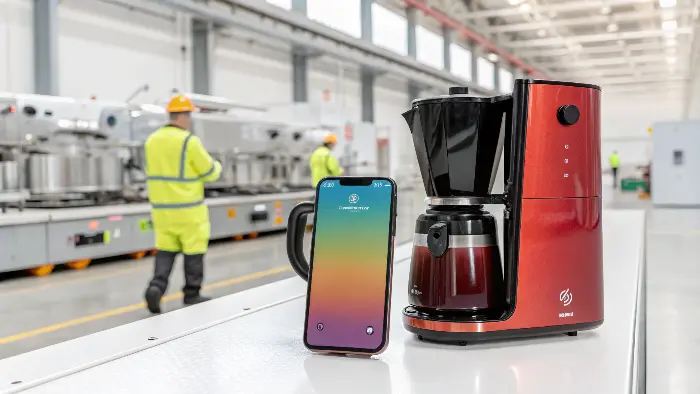Coloring plastics seems simple, right? But for specific industries, it’s a complex puzzle. Using the wrong masterbatch can lead to product failure, regulatory nightmares, or safety issues. Understanding these unique demands is crucial for success.
Color masterbatches face distinct requirements across industries. Medical applications demand strict biocompatibility and FDA compliance. Automotive needs focus on durability against UV and weather, plus aesthetics. Consumer electronics prioritize precise color matching, safety (like RoHS, REACH), and specific functional additives like flame retardants.

Choosing the right color masterbatch isn’t just about picking a nice shade. It’s about meeting a whole host of specific needs that change dramatically from one industry to another. I’ve seen firsthand how a seemingly small detail like colorant choice can have big implications. Let’s dive into what makes each sector so different.
What Makes Color Masterbatches for Medical Devices So Unique?
Imagine a medical device failing because its colorant wasn’t safe. The thought is terrifying. This highlights the immense pressure to get masterbatches right in the medical field, where patient safety is absolutely paramount. It’s a world of stringent rules.
Color masterbatches for medical devices are unique due to extreme regulatory scrutiny, especially from bodies like the FDA. They must be biocompatible, meaning non-harmful to the human body. Color choices are often limited by these regulations, and specific testing like cytotoxicity and sensitization is frequently required for materials in patient contact.

Working with clients in the medical sector has always been a lesson in precision and responsibility. The rules are there for a very good reason: patient well-being. It’s not just about making a part blue or green; it’s about ensuring that blue or green is completely safe. I’ve learned that the margin for error here is virtually zero.
Key Considerations for Medical Masterbatches:
-
Regulatory Compliance: This is the biggest hurdle and the first thing we discuss.
- FDA Oversight: In the USA, the Food and Drug Administration (FDA) heavily regulates color additives in medical devices. This is especially true for devices with "significant body contact." My team and I always double-check the latest FDA guidelines before starting any medical project.
- CFR Title 21 Part 73 Subpart D: Color additives must comply with these specific regulations. Often, this means using FDA-approved pigments, and sometimes even batch certification by the FDA is needed.
- Limited Palette: Because of these strict rules, the range of available colors for medical devices is often narrower than in other industries. I remember a client wanting a very specific vibrant shade for a new diagnostic tool, but we had to work together to find a compliant alternative that still met their branding needs.
-
Biocompatibility: This is non-negotiable. The material simply cannot cause harm.
- The masterbatch, and the final colored plastic part, must not cause any adverse reactions when in contact with the human body.
- ISO 10993: This is a key standard for biological evaluation of medical devices. Testing often includes:
- Cytotoxicity: Ensuring materials don’t kill cells.
- Sensitization: Checking they don’t cause allergic reactions.
- Irritation: Making sure they don’t irritate skin or internal tissues.
- For devices with long-term contact (over 30 days), the testing is even more rigorous. Detailed information about the color additives must be provided for FDA review. We often collaborate closely with testing labs to ensure all requirements are met.
The carrier resins and any other additives in the masterbatch also need to be carefully selected to meet these biocompatibility and regulatory standards. It’s a complex area where expertise and meticulous attention to detail are vital.
How Do Color Masterbatches Drive Performance and Style in Cars?
Your car’s shiny bumper looks great, but it also takes a beating from sun, rain, and road debris. This dual demand for beauty and toughness is what makes automotive masterbatches so challenging. They need to perform as well as they look.
Automotive color masterbatches drive performance and style by providing vibrant, consistent colors for both interior and exterior parts while ensuring extreme durability. They must resist UV radiation, weathering, and scratches. Compatibility with base polymers and the inclusion of performance-enhancing additives like UV stabilizers are also critical for longevity and function.

The automotive industry is fascinating because it blends art and engineering so perfectly. Color isn’t just color; it’s part of the car’s identity and a key factor in its perceived quality. And those colors have to last, often for a decade or more, under some pretty harsh conditions. I’ve worked on projects for everything from interior trim that needs to feel luxurious to exterior body panels that need to withstand years of abuse.
Balancing Aesthetics and Functionality:
-
Exterior Components:
- Think bumpers, grilles, mirror housings, and even body panels. These parts are constantly exposed to the elements.
- UV Resistance: This is huge. Colors can fade or degrade quickly under sunlight if not properly formulated. Masterbatches for exterior parts almost always include powerful UV stabilizers. We’ve seen parts fail accelerated weathering tests if this isn’t spot on.
- Weatherability: They need to withstand rain, snow, temperature extremes, and humidity.
- Scratch Resistance: Especially for high-gloss finishes, resistance to minor scratches and scuffs is important.
- Color Harmony: Ensuring consistent color across different plastic parts, often made from different materials and by different suppliers, is a major challenge. This requires tight control over masterbatch production.
-
Interior Components:
- Dashboards, door panels, consoles, and trim pieces.
- Low VOC Emissions: Volatile Organic Compounds can contribute to that "new car smell" but are increasingly regulated for health reasons. Masterbatches must be formulated to minimize these.
- Lightfastness: Interior parts are also exposed to sunlight through windows, so fading is a concern here too.
- Haptic Properties: Sometimes, the masterbatch can subtly influence the feel of the plastic surface, contributing to the overall tactile experience.
-
Material Compatibility and Additives:
- The carrier resin in the masterbatch must be perfectly compatible with the base polymer of the automotive part (e.g., PP, ABS, PC/ABS, PA). Incompatibility can lead to weak parts or surface defects.
- Beyond UV stabilizers, other additives might include heat stabilizers, flame retardants (for specific applications near heat sources), or agents to improve impact strength.
The automotive supply chain is also very rigorous, with strict quality control and traceability requirements. Every batch of masterbatch needs to perform consistently, year after year.
Why Are Precision and Safety Critical for Color Masterbatches in Electronics?
That sleek new smartphone or stylish coffee maker owes much of its appeal to its color and finish. But behind that beauty lies a complex world of precise color matching and stringent safety rules. Getting it wrong can mean a product that looks cheap or, worse, is unsafe.
Precision and safety are critical for color masterbatches in electronics because consumers expect flawless aesthetics and products must meet global safety regulations. This means exact color matching across production runs and compliance with standards like RoHS (Restriction of Hazardous Substances) and REACH, avoiding harmful substances like heavy metals and certain phthalates.

Consumer electronics is a fast-paced industry where design trends change quickly, and product appearance is a major selling point. I’ve seen how much effort goes into achieving that perfect shade of "space gray" or "rose gold." It’s a thrill to help bring those designs to life. But it’s not just about looking good; it’s about being safe for the consumer and the environment.
Key Demands in Consumer Electronics:
-
Aesthetic Excellence:
- Color Matching Accuracy: This is paramount. Brands have very specific color targets, often defined by Lab* values, and the masterbatch must deliver that color precisely, batch after batch. This can be tricky because the base resin’s natural color, the type of pigment used, and interactions with other additives can all affect the final shade. I’ve spent many hours with clients and our lab technicians, tweaking formulations to hit an exact color target.
- Color Consistency: Maintaining this accuracy across millions of parts is a huge challenge. Any variation can lead to rejected components and significant costs.
- Special Effects: Metallic sheens, pearlescent effects, and soft-touch finishes are common, requiring specialized masterbatches and careful processing.
-
Regulatory Compliance and Safety:
- RoHS (Restriction of Hazardous Substances): This EU directive restricts the use of specific hazardous materials, including lead, mercury, cadmium, and hexavalent chromium. Masterbatches must be formulated to comply, and we provide documentation to prove it.
- REACH (Registration, Evaluation, Authorisation and Restriction of Chemicals): Another EU regulation, REACH, addresses the production and use of chemical substances and their potential impacts. Substances of Very High Concern (SVHCs) are closely monitored.
- No Harmful Substances: Products are often expected to be free from intentionally added phthalates and Bisphenol A (BPA), especially if they might come into contact with food or skin.
- Nanomaterial Safety: If nanomaterials are used (e.g., for certain functionalities or colors), they should be securely fixed within the polymer matrix to prevent release and potential exposure.
-
Functional Additives:
- Beyond color, masterbatches for electronics often carry functional additives like:
- Flame Retardants: Crucial for safety in devices that generate heat or are powered by electricity.
- Antistatic Agents: To prevent dust accumulation or electrostatic discharge that could damage sensitive components.
- UV Stabilizers: For products that might be exposed to sunlight, like outdoor speakers or portable devices.
- Beyond color, masterbatches for electronics often carry functional additives like:
The combination of high aesthetic demands and strict global safety regulations makes masterbatch selection for consumer electronics a very specialized task, requiring constant learning and adaptation.
Conclusion
So, whether it’s ensuring patient safety in medical devices, enduring the elements in automotive parts, or achieving that perfect look for consumer electronics, industry-specific masterbatch requirements are vital. Choosing wisely means better, safer, and more successful products for everyone.

